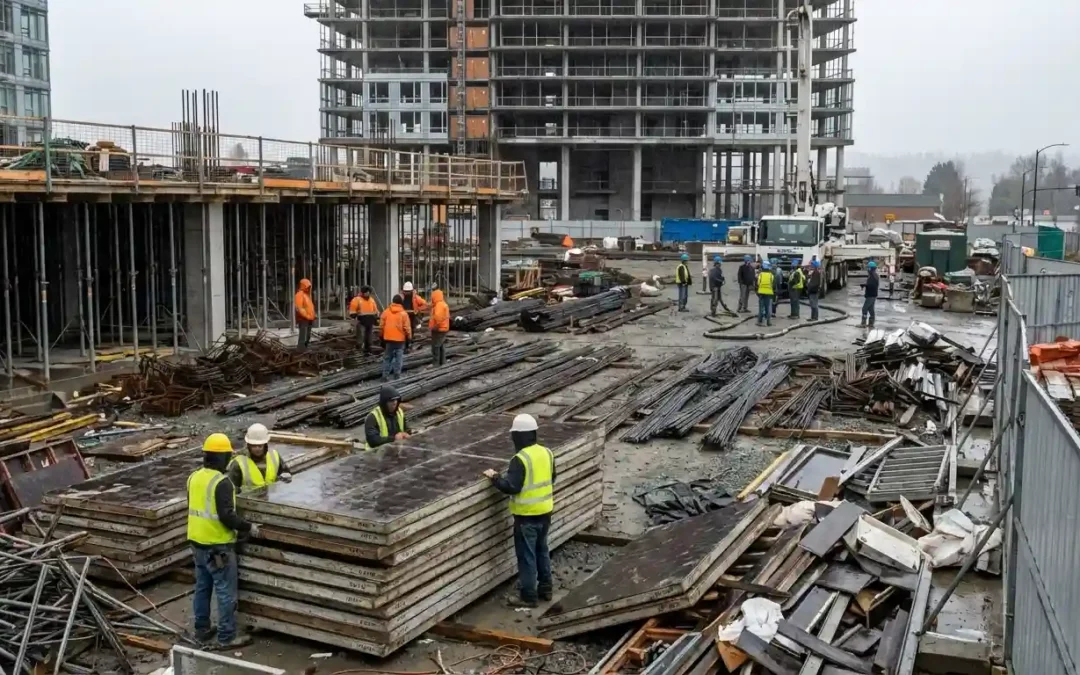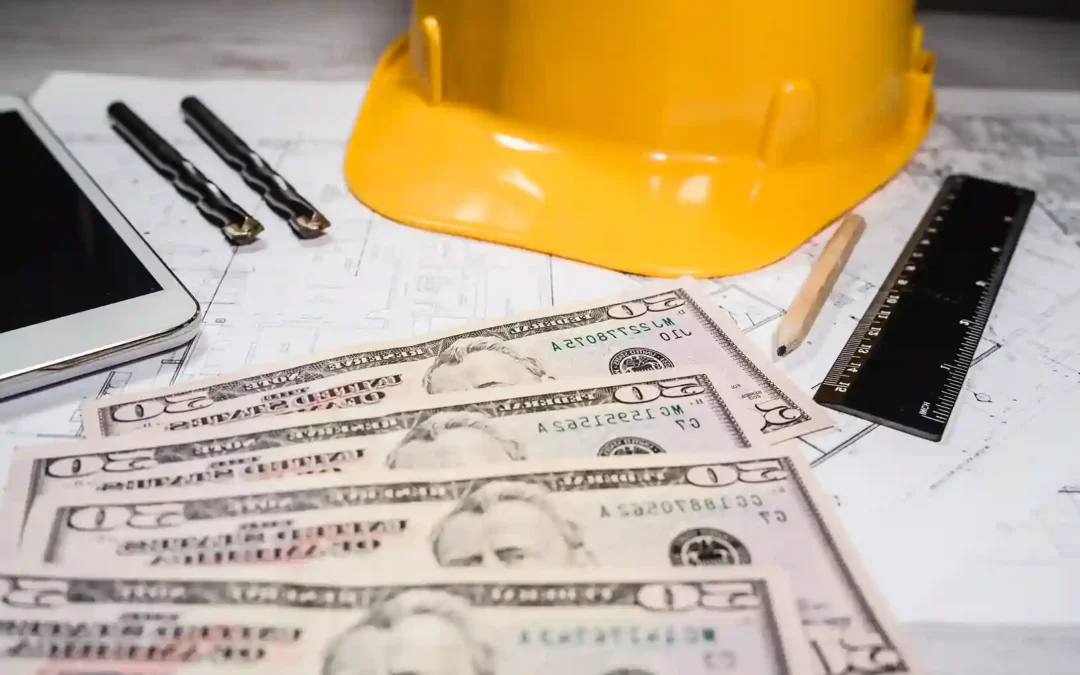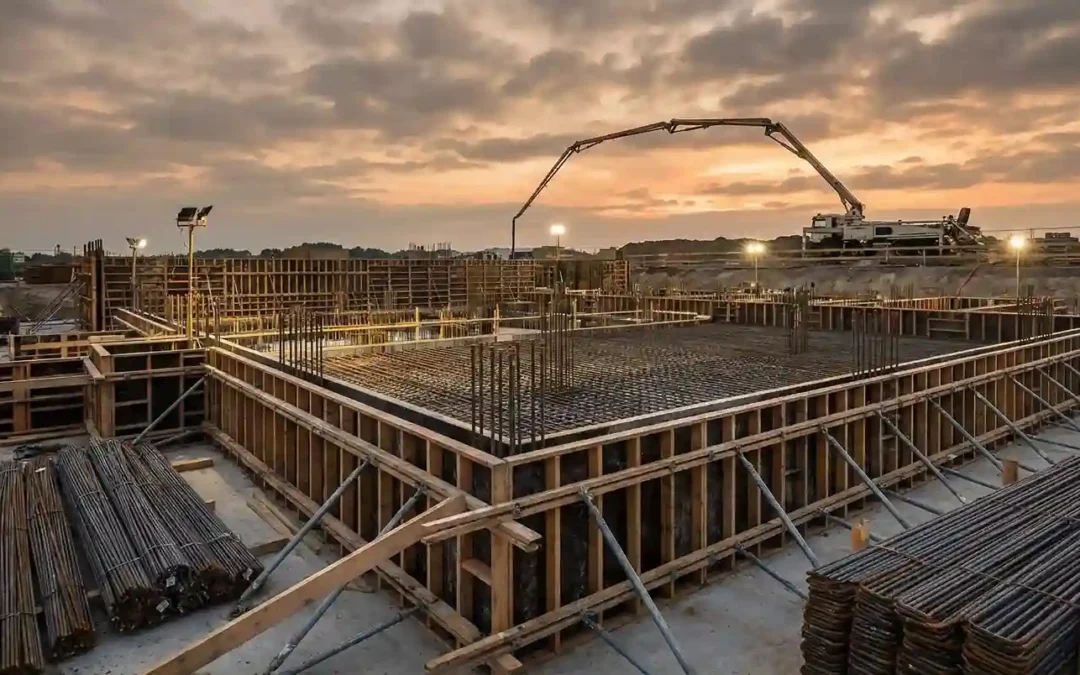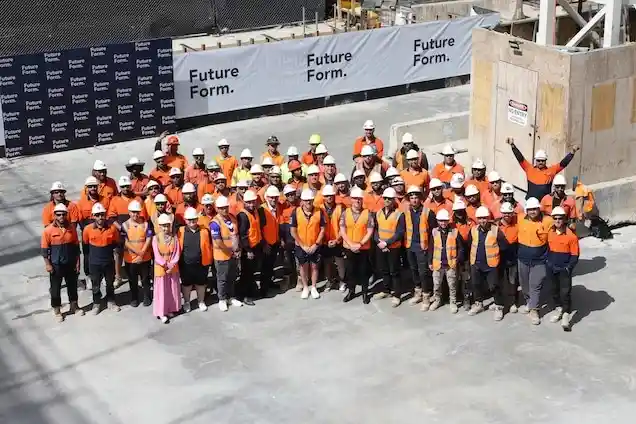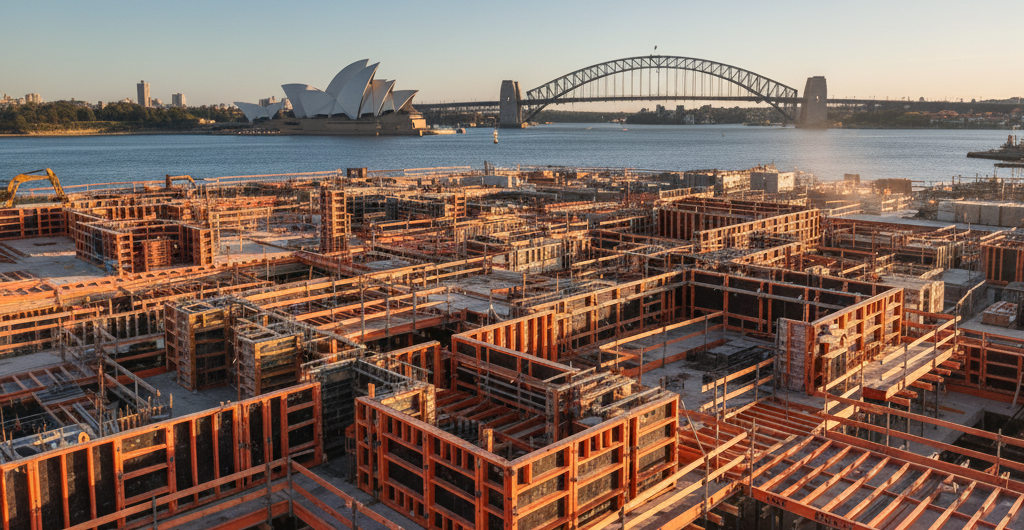
In the industry of large-scale developments, whether it’s high-rise buildings or complex transport hubs, the keys to success lie in careful coordination and constant accuracy. Among all the moving parts, the concrete structure stands out as one of the most demanding components. Forming, reinforcing, and pouring concrete requires collaboration among multiple teams, coordinated schedules, and dedication to strict performance goals.
This is where FRP — form, reo, and pour — becomes important. Combining these three key components into a single integrated package allows developers, contractors, and clients to simplify processes, improve efficiency, and achieve stronger and more reliable results.
Future Form stands out as a leading company in providing customised FRP structural packages, seamlessly integrating design knowledge, on-site expertise, along with effective project management to meet the challenges of large and complex constructions.
What is an FRP structural package
An FRP structural package brings together the three steps of concreting — form, reo, and pour — within an integrated management structure.
- The form acts as a foundation and temporary support that determines the concrete’s shape until it sets and hardens.
- Reo consists of the steel bars and mesh that provide the structure with its strength and durability.
- The term “pour” refers to the processes of delivering, placing, compacting, and curing concrete to form the final structure.
Previously, these areas were managed by different subcontractors, each operating on their own timelines and project scopes. This often resulted in inefficiencies, difficulties in coordination, and longer schedules. By combining them through a FRP contractor, the process becomes integrated and much more effective business. The contractor controls all three stages within a single arrangement, ensuring consistency, accountability, and harmony throughout each pour.
In simple terms, FRP signifies a transition from disconnected contracting to integrated structural delivery, with each stage improving and forming what comes next.
Why bundling form, reo and pour matters on large-scale projects
In large-scale construction projects, there is a significant degree of interdependency, encompassing everything from structural cores to podium slabs and transfer beams. The effectiveness of these structures relies on the coordination of formwork, reinforcement, and pouring processes.
When different teams manage tasks independently, it often leads to scheduling delays, misunderstandings, and variations in quality. For example, if there are delays in releasing the formwork, it can affect the installation of reinforcement, and if the reinforcement is not placed correctly, it may lead to delays in pouring or even structural issues.
Bundling FRP significantly minimises these risks by:
- Removing trade restrictions that lead to delays and disagreements.
- Improving the flow between different stages.
- Offering a collaborative approach to design, reinforcement, and pour planning.
- Providing clients with a single source of responsibility and results.
The FRP model transforms a dispersed process into an integrated system, delivering efficiency improvements that are crucial for large-scale projects.
Key advantages of bundled FRP packages in large-scale projects
Improved coordination and communication
When a single contractor oversees all three stages, communication flows smoothly and efficiently. Internal resolution of design adjustments, reinforcement queries, and pour scheduling helps to prevent problems among multiple subcontractors.
Cost and time efficiency
Bundled FRP packages streamline the process by minimising the need for individual tendering, monitoring, and management. By sequencing formwork, reo, and pour activities within a single timeline, we effectively minimize downtime between workers. This approach leads to faster cycle times and enables earlier project completion.
Consistent quality control
Consistent quality standards are maintained from the very first panel set all the way through to the final pour. The same team manages alignment, reinforcement cover, and curing conditions, leading to structurally sound and consistent results.
Reduced rework and risk
Rework is common when the formwork fails to align with the reinforcement layouts or when the pour plans lack complete coordination. A bundled FRP system effectively addresses this issue by aligning tolerances, installation locations, and pour sequencing before the start of construction.
Simplified contract management
Having one FRP contractor simplifies the process for clients and builders by providing a single contract, an overall schedule, and a clear point of accountability. This structure greatly minimises claims, variations, and risks related to interfaces.
Optimised resource management
By combining trades, FRP contractors By combining trades, FRP contractors can improve work distribution, use of equipment, and material supply chains — improving productivity and sustainability.
Practical advice for clients considering adopting integrated FRP structural packages
For developers, contractors, or project managers exploring a bundled FRP approach, there are several key procedures that can lead to success:
- Involve FRP contractors from the beginning: Bring them into the design and tender stages to gather useful information on constructability and improve timeline efficiency.
- Clear outline scopes and interfaces: Even within a set, outline boundaries for responsibilities like shoring, waterproofing, or post-tensioning.
- Ensure capability in all three areas: Choose a contractor with known in-house skills or strong partnerships in formwork, steel fixing, and concreting.
- Maintain transparency and collaboration: Hold collaborative workshops to align on designs, assess 3D models, and finalise pouring sequences.
- Highlight the importance of safety and compliance: Make certain that the FRP contractor maintains strict safety protocols during formwork construction, steel fixing and concrete pouring.
- Emphasise early coordination: The most significant advantages of FRP are realised when the package is integrated before to the start of structural work.
By following these principles, clients may achieve the complete potential of integrated FRP delivery while staying clear of the challenges related to fragmented management.
How FRP structural packages empower visionary projects
Innovative projects that redefine skylines and elevate urban environments require construction methods that can live up to their vision. FRP packages allow the implementation of complex designs with remarkable precision, efficiency, and confidence. By combining form, reo, and pour, we ensure that every part of the structural process is aligned from the beginning, ensuring accuracy and effectiveness throughout all stages.
This integrated method allows the creation of intricate shapes while maintaining high standards of quality, finish, and structural strength. FRP goes beyond its role as a simple delivery method; it serves as a platform for creativity, grounding architectural visions in strong structural integrity and seamlessly linking imagination and reality.
Future Form’s approach to bundled structural packages
Managing large-scale projects involves more than just technical expertise; it requires perfect cohesive teamwork and exceptional attention to detail. At Future Form, we simplify complexity easy to understand with an integrated FRP model based in three key principles: integration, collaboration, and precision. By integrating formwork, reinforcement, and concrete placement into one strategy, we effectively manage risk, optimise logistics, and ensure a more smooth project delivery from beginning to end.
Our team engages early with engineers, builders, and developers to provide constructability insights and digital modelling that align every detail — from reinforcement layouts to pour sequencing. With a focus on accuracy and accountability, Future Form delivers consistent, high-quality results across every phase. This approach not only improves efficiency but also ensures clients achieve certainty and confidence in delivery.
Use cases and examples of FRP packages in Future Form’s large-scale projects
Future Form’s integrated FRP strategy has been successfully applied on many iconic projects, demonstrating how combined structural solutions lead to real-world outcomes on-site.
International Airport Terminal Station
The International Airport Terminal Station project saw Future Form’s FRP package take centre stage in managing huge concrete operations within a secure and strictly regulated setting. The project involved significant slab pours, intricate reinforcement designs, and careful attention to detail regarding hidden service penetrations. By bringing together Form, Reo, and Pour activities within a single framework, the Future Form team achieved smooth transitions between stages, minimised downtime, and ensured complete alignment with programme milestones.
50 First Avenue, Maroochydore
At 50 First Avenue, an innovative high-rise project, Future Form provided a complete FRP solution that enhanced structural advancement across various levels. Coordinating formwork, reinforcement, and pouring within a single strategy enabled rapid floor cycles and superior concrete finishes. The integration minimised rework, enhanced scheduling precision, and offered the client complete insight into project advancement and cost certainty.
Both projects show how Future Form’s integrated FRP model transforms complexity into seamless coordination, achieving structural excellence and reliable results on a large scale.
FRP as a strategic backbone of structural packages in the future
As projects expand in scale and ambition, the construction industry’s dependence on integrated systems will grow. FRP packages combine form, reo, and pour into a single integrated structural solution, showcasing the future of efficient and responsible delivery.
By minimising fragmentation and promoting collaboration among multiple fields, FRP establishes a framework that enables quicker, safer, and more reliable construction. For developers and clients, it ensures that every aspect — from the accuracy of formwork to the quality of the final pour — is handled in an integrated way.
Future Form’s dedication to innovation, safety, and performance keeps it leading the way in this evolution. As construction methods advance, FRP will remain a crucial element in contemporary structural delivery, allowing innovative projects to develop with assurance and accuracy.
References
Future Form. (n.d.). Projects. Retrieved from https://futureform.com.au/projects/
Goyal, R., Majhi, S., Mukherjee, A., & Goyal, S. (2022). FRP Stay-in-Place Formworks for High Performance of Concrete Slabs. Journal of Composites Science. Retrieved from https://www.researchgate.net/publication/364444182_FRP_Stay-in-Place_Formworks_for_High_Performance_of_Concrete_Slabs
Nelson, M. S., Fam, A. Z., Busel, J. P., Bakis, C. E., Nanni, A., Bank, L. C., Henderson, M., & Hanus, J. (2014). Fiber-Reinforced Polymer Stay-in-Place Structural Forms for Concrete Bridge Decks: State-of-the-Art Review. ACI Structural Journal, 111(5), 1069–1080. https://doi.org/10.14359/51686810
SRG Global. (2020). Form Reo Pour. Retrieved from https://www.srgglobal.com.au
Tencom Ltd. (n.d.). Optimising Concrete Forms through Design and Pultruded FRP Forms. Retrieved from https://www.tencom.com/blog/optimizing-concrete-forms-through-design-and-pultruded-frp-forms

